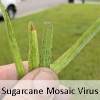
Cold vs Deadly Disease
My experience with Brown Patch has me categorizing it as a "cold" and not a "deadly disease".
Why?
- Brown Patch generally will not kill your grass – unless it is near death, to begin with.
- It is a temporary condition – Brown Patch thrives at moderate soil temperatures and as the soil temperature rises (or lowers) the soil-borne Brown Patch will cease to be a problem.
- The causal agent is part of the environment – it is a soil-borne disease and cannot be eliminated.
- Since it is not lethal to lawns, I manage the Brown Patch with organic methods to reduce occurrences and treat only severe occurrences with conventional fungicides.
What to expect from Brown Patch
Brown Patch is a cool-season disease occurring on cool 70°, still nights on lawns with excess nitrogen levels. Brown Patch will be active for only a few hours a day – as soon as the temperature changes or the sun shines, Brown Patch becomes inactive.
Brown Patch is most active from October through February. Brown Patch forms circles and/or lobed circles of joined circles of tan/green weak turf. The rings start out fist size and can grow to be 20 feet in diameter or larger. The outer edge of the active Brown Patch is multi-colored, mainly yellow in color, and very distinct. Whereas inactive Brown Patch will not have the yellow ring.
Treatment with Fungicides
There is no permanent cure. Curative treatments of fungicides will last about 14 days. To prevent Brown Patch you must treat the turf with a fungicide before the symptoms occur every 14 days during 70-degree weather. Prevention is cost-prohibitive for most homeowners making more organic control the best solution.
Organic Control of Brown Patch
Manipulating fertilizers is the best management practice for controlling Brown Patch. To reduce the impact of Brown Patch during the cool season months I use slow, organic sources for nitrogen in very sparse amounts and high amounts of potassium. Manipulating fertilizer is "organic" – and organic methods are very "green" in practice but slow to develop and weak in performance. Therefore in severe cases, I will use a commercially available fungicide as a curative measure and then return to the organic methods.



